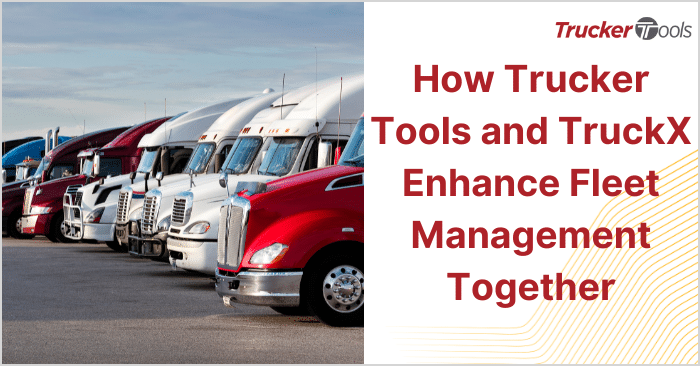This ongoing Broker Tip blog series provides time-savings tips and educational information for freight brokers like you who are working in freight brokerage and third party logistics operations — whether you’re new to the broker industry or a seasoned pro. This newest blog in the series is dedicated to real-time visibility. In this blog, you’ll learn exactly real-time visibility is, why it’s such a critical component of shipper service, about the technology that provides it and what you should look for in real-time visibility software platforms.
What Is Real-Time Visibility?
When you hear people in the industry talk about real-time visibility (also known as load tracking), they’re referring to the ability to know exactly where freight is while it’s in transit. The real-time part of that phrase is key because it allows you as a freight broker to provide precise ETAs to your shipper customers and deal with any delays as they occur, instead of after the fact.
Why Real-Time Visibility Is Important
Real-time visibility of freight is incredibly important to shippers, distributors and receivers. Access to precise and reliable data on the location of their freight makes it easier for them to provide high levels of service to their own customers. Real-time load tracking also helps shippers, distributors and receivers (who are often retailers) make better business and planning decisions that ultimately make their operations more efficient. It’s become so important to shippers in particular that you may have to meet specific real-time visibility criteria in the form of KPIs to broker a shipper’s freight.
In your freight brokerage or logistics operations, access to real-time visibility data helps you better meet your customers’ needs and expectations. Real-time digital load tracking also is much more accurate and efficient than using manual phone calls to the driver or dispatcher for load tracking purposes. Over time, real-time visibility data can help you better understand your internal operations, as well.
How Real-Time Visibility Technology Works
Most real-time visibility technology in the trucking industry includes a web-based software platform from which you can monitor and manage freight while it’s in transit, along with a mobile app for the driver to use while transporting the load. The mobile app uses the GPS tech in the trucker’s smartphone to send you periodic location pings that you can view in the real-time visibility software platform or in your TMS in real-time.
What To Look for in Real-Time Visibility Software Platforms
You have multiple options to choose from when considering a real-time visibility software platform for your brokerage or logistics company. Regardless of the size of your company, here are three features you should look for in a real-time visibility platform.
1. Driver-Focused Mobile App
Drivers play a crucial role in real-time visibility. They must be active participants if you want to achieve the highest return on your technology investment. It’s important then to choose a real-time visibility platform whose driver mobile app provides true value to drivers. If you opt for a solution with a driver app that’s difficult to use, can only be used one time or that doesn’t provide any value to the driver, it may be difficult to convince drivers to use the technology. Multi-functional driver apps that do more than just track loads for brokers encourage driver participation and help you increase freight visibility.
2. Integration Options
Your real-time visibility software platform should have the ability to integrate with your TMS. This integration capability allows you to view the platform’s real-time load tracking data directly in your TMS. TMS integration means you can get the information you need immediately without opening a new browser or software program. You also should prioritize real-time visibility platforms that integrate with the visibility software used by your customers. If the visibility platform integrates with the software used by your shippers, you can automatically and instantly share visibility data and ETAs with them digitally and in real-time.
3. Large Carrier/Driver Network
It’s also a good idea to choose a real-time visibility solution with a sizable existing driver/carrier network. Doing so will increase the chances that you’re choosing a driver and carrier-friendly technology. Opting for a platform with a substantial existing driver and carrier network increases the odds that your carrier and drivers may already be using the visibility app in their day to day work. Familiarity with the technology reduces barriers to adoption and the amount of driver education you may need to provide during implementation.
Read “Trucker Tools: The Load Tracking Tech Preferred by Drivers and Carriers” to discover why nearly 2 million drivers and 250,000 carriers are using Trucker Tools’ technology.
Schedule a free demo of Trucker Tools’ real-time visibility software platform.






